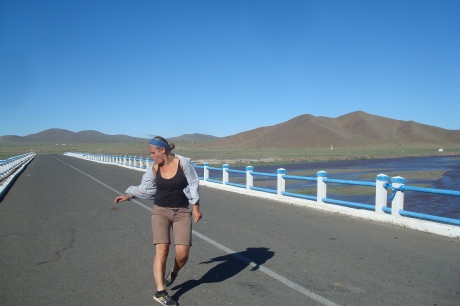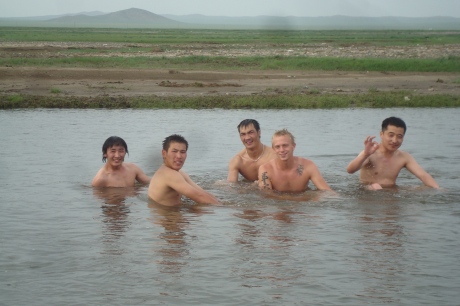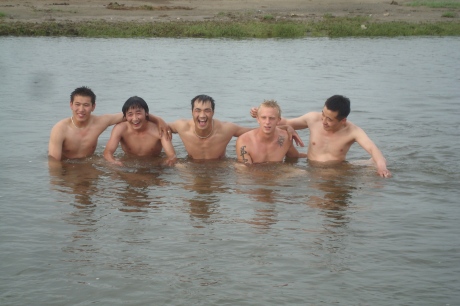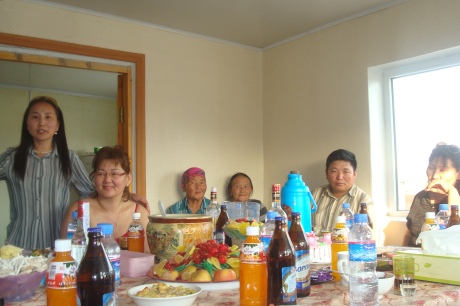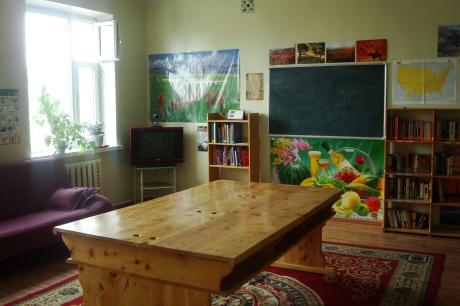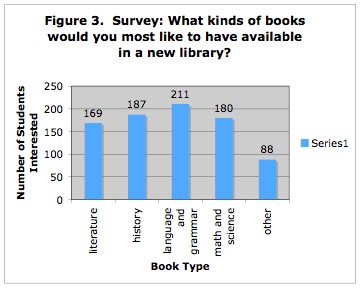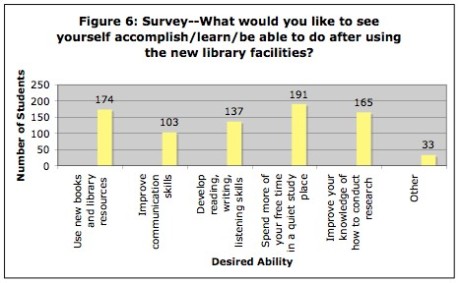WHAT TO SAY, WHAT TO SAY
July 2, 2010
I’m in a guest house in UB now, after having moved out of Arvaikheer permanently, and everything’s a little too close and cluttered for me to say how I feel about all of that at the moment. I will say, though, that my final bus ride was less emotional than I would have liked it to be– mostly on account of the catholic nun seated next to me who wouldn’t stop cursing (isn’t there some kind of rule against that?) and expressing how upset she was that we kept breaking down. I suppose my surprise at her choice of language and the way I had to strain to stifle laughter actually kept me from sharing in her frustration, so that’s good.
Or maybe I was just all cried out. Saying goodbye to my community was way harder than I expected; being in Arvaikheer this summer, and not America-ing and then training in UB like last year, allowed me to nurture some of my older friendships in a way I wasn’t able to before. I got super, super close to a lot of people at the last minute as a result.
And now for some scattered photo documentation.
Laura dancing on the way to Elsen Taserhai (ps– peep our flooded river)
 Laura running toward the dunes at Elsen Taserhai. My camera died for the most stunning part of this trip, so I’ll have to steal and upload some pictures from my friends later. This was kind of our last adventure before leaving– hot sand and beautiful sunlight and good company.
Laura running toward the dunes at Elsen Taserhai. My camera died for the most stunning part of this trip, so I’ll have to steal and upload some pictures from my friends later. This was kind of our last adventure before leaving– hot sand and beautiful sunlight and good company.
 Ding Dong, with a keen eye on my going-away party supplies
Ding Dong, with a keen eye on my going-away party supplies
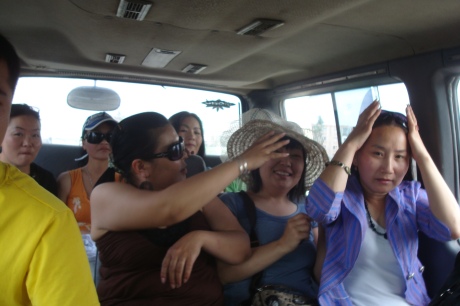 Car 1 of my going-away party caravan. Back to front, L to R: Handaa, Oyunchimeg, Jargal, Uugana, Batmaa, Oyunaa. We went to the same river as the frozen one featured in my first ever post two years ago and had a huge sheep barbecue.
Car 1 of my going-away party caravan. Back to front, L to R: Handaa, Oyunchimeg, Jargal, Uugana, Batmaa, Oyunaa. We went to the same river as the frozen one featured in my first ever post two years ago and had a huge sheep barbecue.
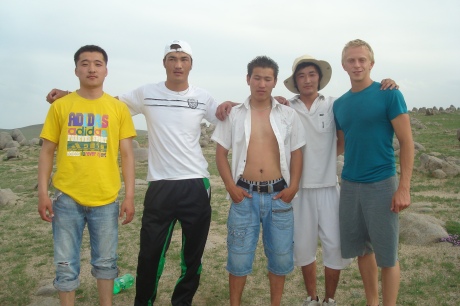 The going-away party barbecue men, before the clothes came off. L to R: Tuvshoo, Baagii, Ukaa, Batbaatar, moi (but I wasn’t in any position to be handling fire, so they did all the work)
The going-away party barbecue men, before the clothes came off. L to R: Tuvshoo, Baagii, Ukaa, Batbaatar, moi (but I wasn’t in any position to be handling fire, so they did all the work)
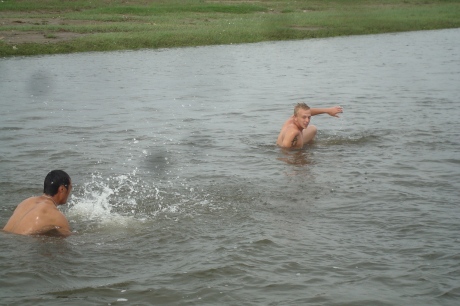 Somewhere between vodka shot #1 and vodka shot #16, I ended up in the river.
Somewhere between vodka shot #1 and vodka shot #16, I ended up in the river.
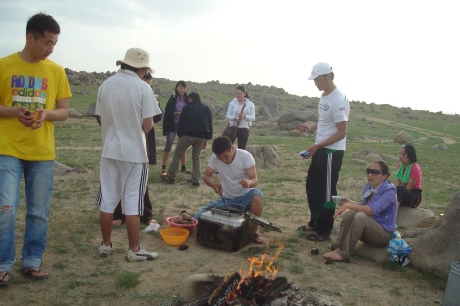 At some point the clothes went back on and the barbecue commenced
At some point the clothes went back on and the barbecue commenced
 Two of the guys went to this dude’s ger nearby and borrowed some tongs from him, so he joined the party
Two of the guys went to this dude’s ger nearby and borrowed some tongs from him, so he joined the party
 And then the ladies started getting thrown in the river
And then the ladies started getting thrown in the river
 Batbaatar, the guy who runs the gym I go to
Batbaatar, the guy who runs the gym I go to
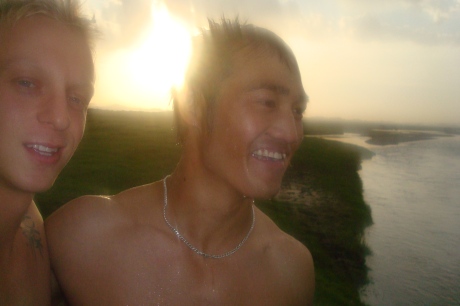 Baagii, the guy who cuts my hair. I guess the clothes came off again.
Baagii, the guy who cuts my hair. I guess the clothes came off again.
 Uugana, gearing up to own Baagii with two fistfuls of mud
Uugana, gearing up to own Baagii with two fistfuls of mud
I guess Baagii rubbed mud all over me. He also kicked me in the head and broke one of my toes when he threw me into the river. That dude is strong. Anyway, there were twenty or so Americans, Aussies, Brits, and Mongolians at the party. It was a really, really fun time– the kind of party where you wake up the next morning and can relive the good moments through the physical pain you find yourself in.
I think it’s kind of cool that my first and last posts from this two-year experience have had wild party pictures taken at the same river. I’ll miss it– still not quite sure what else to say about that.
Two days after the river debauchery, my friend Oyun celebrated her birthday and the opening of her newly constructed house. Here are some photos:
L to R: Oyunaa, Oyun’s sister-in-law, Oyun’s aunt, Oyun’s mom, the guy who built the house, and Chimgee
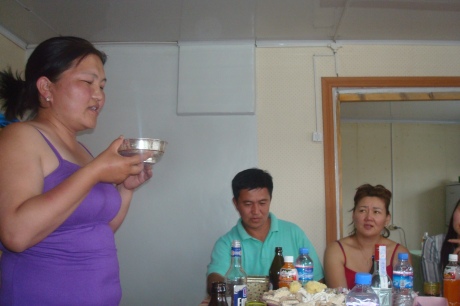 L to R: Oyun, Oyun’s brother, and Oyun’s sister-in-law
L to R: Oyun, Oyun’s brother, and Oyun’s sister-in-law
The only other thing I’m loading on here as of now are pictures of my school’s completed library (and yes, I did, in fact, finish it on the 28th–the day before I moved out of Arvaikheer.) I’d recently returned from UB with six boxes of books from the US Embassy and Asia Foundation, a brand new computer, and some other supplies. This stuff, in addition to the previous installations, was all removed and locked away while the room was being painted. I was afraid it would stay barren, so as soon as the walls dried, I threw the whole thing back together in three hours. Tada!
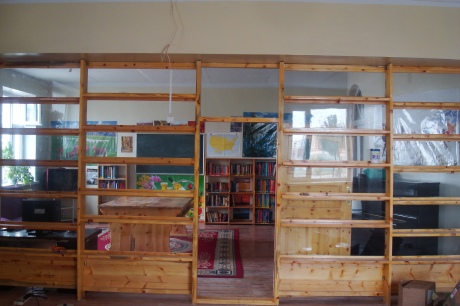 View from the glass/wood office partition. The side from which this photo was taken is the librarian’s office and the future site of the school’s non-foreign-language book section.
View from the glass/wood office partition. The side from which this photo was taken is the librarian’s office and the future site of the school’s non-foreign-language book section.
 Some shelves are still empty, but I figure the next volunteer can do his or her thing with them.
Some shelves are still empty, but I figure the next volunteer can do his or her thing with them.
Amber and Esu threw me a fabulous birthday bash at my favorite Indian restaurant in UB last night, and my camera was also batteryless at that time. I’m worthless with cameras, essentially. But I got a Madonna CD, a beautiful yak cashmere scarf, a bottle of wine, the complete works of Oscar Wilde, awesome time with 15 friends, and some delicious cake out of the evening. Luckily, Amber let me use her camera, so I’ll have some photos of that and the sand dunes pretty soon as a supplementary upload. I’m not gonna do another post, though, I don’t think– this is the last.
On that note, I have no closing thoughts for now– none, at least, other than a bit about my ever increasing inadequacy to make sense of my experiences through words. I look back at my old posts from two years ago and think, “what a tool that person was”– mostly because I tried to compartmentalize and understand everything based on the contrasts between my own personal culture and that of my surroundings here in Mongolia. That’s not the right approach, I’ve learned. I no longer try to illuminate things for myself through contrasts, because no matter how sensitive and politically correct we think we are in doing so, to write about those contrasts is to inadvertently elevate ourselves above our material. At least the way I was doing it. I like to think, then, that my experiences have reshaped the way I view myself in cultural context, and this is one of the most valuable changes I think I’ve made. I guess what I’ve learned is that my personal culture is more a product of my personal surroundings, as opposed to something separate that can be juxtaposed against my environment and observed. Or something. I’m just sad to go. And happy to go home. I’m sure I’ll have more to say later, but I don’t yet know where I’ll post it.
I’m gonna miss this place more than I know how to say.
Thanks for tuning in, friends.
Library Project
January 21, 2010
Hello to everyone who reads this thing! I’m posting the proposal from the library renovation project I mentioned in a recent post. My counterparts and I have been working on it for a few months now and trying to secure funding, and some parties have expressed interest in giving material support of one kind or another. We’re trying really hard to get this thing done before I leave for good in July. (Fyi, the school is pronounced “Mer-ged”, and not like the English word “merged”). The formatting is a bit strange from the paste-in, but check it out anyway:
Refurbished Library Project Proposal
Agency:
Merged Advanced School for Mathematics and Foreign Language
Arvaikheer Soum
Uvurkhangai Aimag
Project Facilitators:
B. Unurbayn, English Language Department Team Leader
Z. Zolzaya, English instructor
Oyunirden, English instructor
Patrick Hamilton, English instructor
D Dulamsuren, Japanese instructor.
S. Erdenbileg, Director
Chimeddorj-Oedov, Network specialist
Executive Summary
Students at Merged Advanced School for Mathematics and Foreign Language were forced to leave their former school facilities last April due to structural concerns, and the new buildings were not large enough to accommodate both classrooms and space for the contents of the previous library. Even when the old library was operational, its resources and accessibility fell short of students’ and teachers’ requirements. Recent renovations and the upcoming completion of a new and larger building have opened up new space for a refurbished library, and the faculty and students are very excited at the prospect.
We intend to open a new library in order to restore independent learning and pleasure reading to the routines of the student body and to continue to improve on the general quality of education at Merged. Part of this process will be to engage our enthusiastic upperclassmen in a student-librarian program that will maximize student control and participation in the management and usage of library resources. Not only will involving students in the program bring them closer to their learning materials, but it will also ensure project sustainability in the future.
Needs assessment conducted among the student population has yielded results that are in overwhelming support of the construction of this library [see Appendix 1]. The available resources at Merged have already enabled us to begin work on the library, and schools and organizations overseas have already pledged their material support in the form of over 1,000 books. With the proper funding to acquire the remaining necessary items, and with careful monitoring and evaluation through frequent surveys and checks carried out among students and teachers, the full educational potential of our library can be reached.
The implementation of the new Library will serve as a tremendous improvement for all of the departments at Merged Advanced School for Mathematics and Foreign Language. This project will increase student involvement and hands-on participation in library resource management, encourage the use of new electronic learning tools, and promote extracurricular activities, research, and pleasure reading in an open study area and in the home. The augmentation of our book collection in a brand new space will bring a level of sophistication and student-control to the scholastic culture of Merged that will surely contribute to its national reputation and bring new opportunities to its much deserving pupils.
Total Project Cost: 5,141,000 MNT— $4,284.17 USD
Community Contribution: 3,506,000 MNT—$2,921.67 USD
Funding Request: 1,635,000— $1,362.50 USD
Project Background
The Merged Advanced School for Mathematics and Foreign Language in Uvurkhangai has maintained a competitive position in Mongolian education since it opened to Arvaikheer’s students in 1998. The school offers clean, well-equipped facilities to students from kindergarten- to eleventh-grade on tracks in math, science, and/ or foreign languages. These students have historically ranked among the top in national standardized tests and competitions—particularly in the areas of Mathematics, English, and Japanese.
This year, however, the old secondary school building was abandoned due to structural problems and its students were moved to the newer building. The school’s library remained in the old building, and all of its rather limited contents have been locked away and unavailable to students since last April. When 400 Merged students from grades five through eleven were given a survey to determine the necessity and intended usage for a new library space with more books, 64% of the students purported to have used the library on a regular basis prior to the abandonment of the old building (see Appendix 1). Merged teachers are therefore concerned that losing the library will hinder their students’ ability to use school resources to go deeper into the subjects they are studying or to continue research on their own.
There is also no longer a place for them to study or browse through books between classes, and nowhere for them to use computers. In the same survey, students reported that having a quiet place to study in the building between classes and after school was the most important aspect they hoped to enjoy in a new library [see Figure 6]. Over 94% of students reported that they would make regular use of a library if it were to be refurbished, and 82.5% expressed that they would be interested in participating in a student-librarian program designed to help the student population have more hands-on involvement in library resource management [see Appendix 1] [see figure 2].
Renovations being carried out at the newer building have created new opportunities for infrastructural improvements, and the school is enthusiastic about the prospect of converting a large room for teachers into a student-centered library containing books in Mongolian, English, Japanese, and Russian, in addition to children’s books, books on physics, history, science, mathematics, and test preparation. Our director and training manager have already offered a space for the new library and helped to divide the responsibilities of setting it up among members of the faculty.
Many of the resources required for finishing the new library are already available at the school, including computers and other electronic learning tools. Additionally, electronic resources in several languages—Chinese, Japanese, Russian, Arabic, Spanish, French, and German—were acquired by the school and will encourage students to take the initiative to learn independently through pleasure reading and browsing to build new language skills [see Figure 5].
Goals and Objectives
1. To increase the amount of available learning resources at the school
Objective 1.1. Acquire books in several languages for all the subjects offered at Merged
Objective 1.2. Set up electronic learning resources (language software, Internet, movies, cds, etc.) and their corresponding technologies in the library for open student usage
2. To encourage students to utilize a variety of learning tools for any subject
Objective 2.1. Hold tutorial sessions on library technology and book borrowing protocol
Objective 2.2. Integrate scheduled library usage into each class group curriculum
3. To encourage out-of-class learning and to provide students with a space for scholastic and extracurricular activities
Objective 3.1. Advertise and maintain open study hours throughout the week
Objective 3.2. Advertise and recruit for clubs and organizations to be held in the library (foreign language clubs, math and science clubs, book clubs, etc.)
4. To improve the quality of language education at the school
Objective 4.1. Provide a centralized location for students to hone their language skills in all of the languages offered at our school via software, the use of written resources, Internet, electronic media, and contact with other students
Objective 4.1. Provide a wide array of resources in languages not offered at the school in order to help students who wish to learn other languages
5. To allow students a place to study and have total control over the information at their disposal in a quiet, user-friendly learning environment
Objective 5.1. Keep the library open from the time school starts to the time it ends
Objective 5.2. Keep library resources and facilities accessible and student-centered
6. To develop students’ and instructors’ comfort in using and maintaining library resources
Objective 6.1. Create a sustainable part-time rotating student-librarian program which would maximize student involvement in the initiation and continuation of the library
Objective 6.2. Train student librarians in assisting library users with library resources
Project Description
With a combination of support from the Merged Advanced School for Mathematics and Foreign Language and resources from The Asia Foundation, we will go to UB to secure books in Mongolian, English, Japanese, and Russian, in addition to children’s books, books on physics, history, science, mathematics, and test preparation. While in the city, we will also use acquired funds to purchase the necessary repair materials, a rug, and whiteboards for the room. Upon returning to Arvaikheer, the books we secure will be kept in our storage facility until the language faculty, carpenters, and student volunteers have finished setting up the library’s furnishings. Carpenter Ts. Baatar will be commissioned to build five large shelves and three large desks.
We will then transfer the previously acquired electronic learning resources to each of the five computers in the new room and hold student librarian managerial elections. Ten students from our Merged tenth- and eleventh-grade volunteer pool will fill daily library-monitoring shifts of three periods each, Monday through Friday (five student-librarians per day with rotation). One library manager will be elected during this time to help oversee the creation and maintenance of the librarian schedule, to aid in the training of student librarians in the checking out of books and software usage, and to ensure student librarian responsibility.
In training the student librarians, Oyunirden, Unurbayn, and Zolzaya will hold three sessions during the second week of the first month to instruct the volunteer librarians on how to keep books catalogued and record book transactions, how to monitor student library usage, how to log hours, and how to assist class groups who have come to carry out their research and class activities. We will also get the assistants acquainted with the accompanying electronic learning resources, with anti-viral software acquisition and implementation, and with computer hardware. This part of the process will involve hands-on usage of the facilities and simple demonstrations, followed by a short quiz to test their knowledge on the material covered.
The final step in this project will be the process of familiarizing the teachers and students of our school with the library facilities and integrating its usage into their curricula. Each of the instructors at Merged will take his or her individual class groups to the library, and these groups will take turns occupying the library for the completion of research projects and class activities on rotating schedules throughout the week. Debriefing meetings will be held on Fridays between faculty facilitators and student librarians to monitor the success of the project and to discuss new ideas and improvements.
The recent construction at Merged has created a competition for space inside the newer building, and therefore securing a set and accessible library room for the students will provide them with a place to organize into more extracurricular clubs and activities without having to work against the busy schedule of lessons in other classrooms. Students will be able to maintain consistent English Club, Japanese Club, Chinese Club, Poetry Club, Internet Club, and Book Club meetings in the new library while at the same time having immediate access to the materials they may need during club meetings.
Among the more beneficial aspects of creating this new library will be the peer-tutoring program we have already begun to organize. The library will provide young learners with the opportunity to improve on their studies not only through independent research, but also through scheduled tutoring hours with advanced students in every subject. This, paired with the aforementioned student librarian program, will set the stage for a new level of student responsibility and preparedness for the time after graduation.
Action Plan Summary
| Action | Facilitator(s) | Time frame |
| Acquire language books from Asia Foundation, etc | Zolzaya, Patrick | Week 4, Month 1 |
| Book categorization and cataloguing | Patrick, Senior students | Week 4, Month 1 |
| Acquire room materials | Erdenbileg, Zolzaya, Patrick | Week 4, Month 1 |
| Room layout and set-up | Zolzaya, Patrick, senior students | Week 1, Month 2 |
| Language software computer transfer | Oedov, Patrick | Week 2, Month 2 |
| Student librarian and managerial elections | Oyunirden, Unurbayn, Zolzaya, | Week 2, Month 2 |
| Training of student librarians and creation of librarian rotating schedule | Patrick, Unurbayn | Week 2, Month 2 |
| Implementation of student librarian program | Unurbayn, Zolzaya, Oyunirden, Patrick | Weeks 3-4, Month 2 |
| Software training, internet set-up, and integration of the library into department curricula | Oedov, Oyunirden, Unurbayn, Patrick, Zolzaya | Week 4, Month 2 |
| Monitoring and Evaluation (logs, surveys, quizzes and exams, etc.) | Student Librarians, Unurbayn | Weeks 1-4, Month 3 |
Potential Library Usage Breakdown
The following is a hypothetical weekly lineup of activities and scheduled usage periods for the library:
| Monday | Tuesday | Wednesday | Thursday | Friday | |
| 8:00-8:40
(student librarian 1) |
10b class research time | Open study | Mongolian Language track research time | Physics track research time | Open study |
| 8:40-9:20 (student librarian 1) | Open study | 9A English class research time | 11b English class research time | Open study | Open study |
| 9:25-10:05 (student librarian 1) | 10A English class research time | 9b English class research time | 11A English class research time | Open study | Open study |
| 10:15-10:55 (student librarian 2) | Open study | Open study | Physics track research time | History track research time | English read-aloud time with primary students 3 |
| 10:55-11:35 (student librarian 2) | Electronic resource tutoring time | Internet Club | Open study | English read-aloud time with primary students 2 | History track research time |
| 11:40-12:20 (student librarian 2) | Open study | Open study | English read-aloud time with primary students 1 | Open study | Open study |
| 12:20-1:00 student librarian 3 | Open study | Open study | Open study | 8a Japanese language research time | 5A, b English class research time |
| 1:00-1:55 (student librarian 3) | Mongolian Language class research time | 8b English Class research time | 7a Japanese class research time | 8b Japanese language research time | 6A, b English class research time |
| 1:55-2:35 student librarian 3 | 7g English class research time | 7b English class research time | 7b Japanese class research time | Open study | Open study |
| 2:40-3:20 (student librarian 4) | Chinese Club | Open study time | Japanese Club | Open study | Book Club |
| 3:30-4:10 (student librarian 4) | Open study | English Club | Test preparation assistance hour | Russian Club | Foreign Language Peer Tutoring |
| 4:10-4:50 (student librarian 4) | Poetry Club | 10A Japanese class research time | Open study | Open study | Maths and Sciences Peer Tutoring |
| 4:55-5:35 (student librarian 5) | Foreign Language Peer Tutoring | 10b Japanese class research time | Japanese Movie Night | Open study | Open study |
| 5:35-6:15 (student librarian 5) | Maths and Sciences Peer Tutoring | open study | Open study | English Movie Night | |
| 6:15-6:55 (student librarian 5) | Open study | Open study | Open study | Teachers’ English Club | Open study |
Sustainability
Integration of the library into Merged curricula will provide students with continued access to reference materials, electronic learning resources, foreign language books and software, and pleasure reading toward a general improvement of the quality of education at the school. Eleventh-grade students involved in the management and monitoring of the room will be in charge of assisting the faculty facilitators in recruiting and co-training new student librarians and managers for the following year prior to leaving Merged. Incumbent tenth-grade student librarians can also choose to run for the position again for their final year of school.
Current enthusiasm among students of all ages at Merged suggests that such a project, if designed and implemented according to plan, would be willingly and responsibly continued into the future despite potential volunteer absence [see Appendix 1]. Tenured faculty involvement is also very strong with this project, and that tends to be a main factor in the future continuation of, or disregard for, such endeavors.
Risks and Mitigations
As mentioned earlier, competition for teaching space is rising among teachers in the midst of the recent construction projects going on at Merged. However, our director and training manager are extremely adamant about the conversion of the current teacher’s lounge into a permanent library, and this should prevent any other parties from attempting to take over the space.
Resources
Refurbished Library Cost Evaluation
| Item | qty | Unit Cost | Total Cost | Requested Funds (MNT) | Arvaikheer |
| (MNT) | (MNT) | Community Contribution (MNT) | |||
| Books | / | 0 | 0 | 0 | 0 |
| Carpet (rug) | 2 | 50,000 | 100,000 | 0 | 100,000 |
| Chairs | 15 | 28,000 | 420,000 | 0 | 420,000 |
| Couches | 1 | 450,000 | 450,000 | 450,000 | 0 |
| Large desks | 3 | 60,000 | 180,000 | 0 | 180,000 |
| Desktop computers | 5 | 500,000 | 2,500,000 | 0 | 2,500,000 |
| Dvd player | 1 | 30,000 | 30,000 | 30,000 | 0 |
| DVD’s | / | 0 | 0 | 0 | 0 |
| Electrical outlet installation (renovation) | 1 | 50,000 | 50000 | 0 | 50,000 |
| Facilitator’s desk | 1 | 45,000 | 45,000 | 45,000 | 0 |
| Flooring (renovation) | 1 | 400,000 | 400,000 | 400,000 | 0 |
| Headphones | 4 | 10,000 | 40,000 | 40,000 | 0 |
| Internet (installation) | 1 | 120,000 | 120,000 | 0 | 120,000 |
| Keys | 5 | 1,000 | 5,000 | 0 | 5,000 |
| Paint (renovation) | 5 | 5,000 | 25,000 | 0 | 25,000 |
| Posters | 10 | 5,000 | 50,000 | 0 | 50,000 |
| Shelves | 5 | 50,000 | 250,000 | 250,000 | 0 |
| Software | / | 0 | 0 | 0 | 0 |
| 21” TV | 1 | 300,000 | 300,000 | 300,000 | 0 |
| UB Transport for Zolzaya and Patrick | 2 | 28,000 | 56,000 | 0 | 56,000 |
| Whiteboard/ | 2 | 60,000 | 120,000 | 120,000 | 0 |
| blackboard | |||||
| Total Cost (MNT) | 5,141,000 | 1,635,000 | 3,506,000 | ||
| Total Cost (USD) | $4,284.17 | $1,362.50 | $2,921.67 |
Funds Management:
An alternate joint account at Khaan Bank will be opened in Zolzaya’s and PCV Patrick Hamilton’s names. All funds will be directly transferred to this account. Proof of requisite amounts for specific items, including the furnishing materials and technological resources stated previously, will be recorded by Zolzaya and Patrick during the purchase of said items.
Resources Available at Merged
Merged Advanced School for Mathematics and Foreign Language is willing to provide the space for our library, to cover the cost of Internet and concurrent monthly fees to be installed on our computers, of a rug, of large desks, of chairs, electrical outlet repair, and of foreign language posters for the walls. It is also willing to cover the cost of transportation to and from Ulaanbaatar for resource acquisition for Zolzaya and Patrick. We have the proper electronic learning tools at our disposal, and the school already has some books and materials in the old library.
All available computers were purchased by the school. Desks and chairs will be commissioned from a local carpenter, Ts. Baatar.
The Barnesville School in Buckeystown, Maryland, has donated a shipment of 1,000 elementary English language books to our Merged Library. These books will arrive in mid- to late-January. The local government of Okayama, Japan, will also be donating a shipment of Japanese language books and CD’s by the end of January 2010.
Monitoring and Evaluation:
Visitor satisfaction surveys will be placed on the facilitator’s desk in the library, and all users will be encouraged to fill one out before leaving the library [see Appendix 2]. This data will be compiled and discussed at weekly student librarian debriefing meetings with members of the faculty project staff. Mandatory post-setup completion surveys will also be distributed to all of the students making use of the facilities via their respective instructors after the first month (and every other month for the first year) to gauge their levels of satisfaction with the facilities and student librarians, involvement in library extracurricular activities and clubs, personal achievement standards, number of books checked out, and frequency of personal and/or extracurricular use [see appendix 4]. Weekly quizzes, personal interviews, and monthly exams will be given on the specific material covered during lessons conducted in the library or for lessons that made use of library materials and/or resources. The survey process will be repeated with addenda at the end of the year to evaluate overall faculty and student satisfaction.
Monitoring
| Monitoring Question | Source of Information | Method(s) of Acquiring Information | Responsibility | Timeframe/ Frequency |
| What is the level of student satisfaction with the new facilities? | Student library users | Surveys available at library facilitator’s desk, compiled and discussed at student librarian debriefing meetings; student interaction with librarians | Unurbayn, Student
librarians |
Once weekly |
| What is the level of student satisfaction with student librarians? | Student library users | Surveys available at library facilitator’s desk, compiled and discussed at student librarian debriefing meetings | Unurbayn, Student librarians | *Librarians can ask library users to fill out a survey before they leave at any time |
| Are students making good use of the library outside of class? | Student librarians | Student librarian observations, discussed at student librarian debriefing meetings | Unurbayn, Student librarians | Once weekly |
Evaluation
| Evaluation Question | Source of Information | Method(s) of Acquiring Information | Responsibility | Timeframe/ Frequency |
| Is in-class library time having a positive influence on student performance? | Teachers, Students | Mandatory surveys (from students’ perspective); in-class research presentations; exams; teacher debriefing meetings; quarterly grades | D Dulamsuren
Patrick Hamilton Oyunirden Z. Zolzaya B. Unurbayn S. Erdenbileg Chimeddorj-Oedov |
Monthly; end of each quarter |
| Are students’ foreign language abilities increasing due to room usage? | Faculty, Students, competitions/ standardized tests, Exams and Quizzes | Mandatory surveys (from students’ perspective); Personal Interviews; Teacher Interviews; Exam and Quiz Scores | D. Dulamsuren,
Patrick Hamilton, Oyunirden, Z. Zolzaya, B. Unurbayn |
Monthly; end of each quarter |
| Are students reading more for pleasure now that the library has been open and available to them? | Faculty, Student Librarians | Mandatory surveys (from students’ perspective), Personal Interviews; Book Transaction Records; Student Librarian Observations | Student Librarians, D. Dulamsuren,
Patrick Hamilton, Oyunirden, Z. Zolzaya, B. Unurbayn |
Monthly |
| Is the number of checked-out books increasing through library activity and social programming (extracurricular activities, info sessions, class work, etc). | Student Librarians | Book transaction records | Student Librarians, B. Unurbayn | Monthly, end of each quarter |
| Which clubs and extracurricular activities have been most helpful/ enjoyable? | Students | Mandatory surveys (from students’ perspective) | Student Librarians, D. Dulamsuren,
Patrick Hamilton, Oyunirden, Z. Zolzaya, B. Unurbayn |
Monthly |
| What is the most useful resource (technology or personnel) available at the library? | Student Librarians | Mandatory surveys (from students’ perspective) | B. Unurbayn, Student Librarians | Monthly |
Appendix 1: Library Needs Assessment Surveys
Student Survey
Merged Advanced School for Mathematics and Foreign Language is conducting a survey to determine potential interest in the creation of a new library. Please carefully consider all questions and answer honestly.
- Did you ever read or study in the old library before it was closed?
Yes—256/400 = 64% No—144/400 = 36%
- If the library were to be reopened at Merged, would it encourage you to read more?
Yes—377/ 400 = 94.25% No—0 = 0% (no answer) = 23/ 400 = 5.75%
- How many hours per week do you think you would make use of a new library? (Figure 1)
1—31/400 = 87.75%
2—82/400 = 20.5%
3—90/400 = 22.5%
4—58/400 = 14.5%
5—60/400 = 15%
more than 5—79/400 = 19.75%
- Would you be interested in participating in a student-librarian program in a new library?
Yes—330/ 400 = 82.5% No—62/400 = 15.5% No answer—8/400 = 2%
- What kinds of books would you most like to have available in a new library? (Figure 3)
Literature (Novels, Poems, Articles)—169
History books—187
Language and Grammar books—211
Math- and science-related books—180
Other—88
- What kinds of activities would interest you in a new library space? (Figure 4)
English club—171
Chinese club—37
Japanese club—121
Book club—65
Poetry club—33
Essay writing prep—37
Peer tutoring—15
Computer club—152
Foreign songs club—68
Other—47
- In addition to English, what other languages might you be interested in learning or improving your skills in via new library resources? (Figure 5)
German—86
Spanish—19
Russian—142
Japanese—158
Chinese—75
Arabic—8
French—62
Other—30
- What would you like to see yourself accomplish/learn/be able to do after using the new library facilities? (Figure 6)
Use new books and library resources—174
Improve communication skills—103
Develop your reading, writing, and listening skills—137
Spend more of your free time in a quiet study place—191
Improve your knowledge of how to conduct research—165
Other—33
- In your opinion, how much would opening a new library in Merged improve your studies? (figure 2)
Very much—332/ 400 = 83%
Somewhat —39/400 = 9.75%
Not very much—8/400 = 2%
I don’t know—21/400 = 5.25%
Appendix 2: Weekly Monitoring Surveys
Library User Questionnaire
- How satisfied are you with the new library facilities?
- Very satisfied
b. Satisfied
- Neutral
d. Unsatisfied
- How satisfied are you with the assistance of the student librarians?
- Very satisfied
- Satisfied
- Neutral
- Unsatisfied
- How many hours did you spend in the library this week outside of class? (circle one).
1, 2, 3, 4, 5, 5 or more.
Appendix 3: Monthly Evaluation Surveys and Quarterly Evaluation Guidelines
Monthly Evaluation Survey
- Is in-class library time having a positive influence on your studies? Yes/ No
- Are your foreign language abilities increasing due to room usage? Yes/ No
- Are you reading more for pleasure now that the library has been open and available to you? Yes/ No
- Which clubs and extracurricular activities have been most helpful/ enjoyable?
- What is the most useful resource (technology or personnel) available at the library?
Quarterly Evaluation Guidelines
Questions to Consider:
- Is the library schedule conducive to incorporating library resource usage into class curricula?
- Is in-class library time having a positive effect on student performance?
- Is the number of checked-out books increasing through library activity and social programming (extracurricular activities, info sessions, class work, etc)?
- Are students’ foreign language abilities increasing post library-setup?
- Have students’ test scores shown changes since the opening of the new library?
Appendix 4: Figures and Charts
Home for a Spell
September 19, 2009
My excuse for the late post–no internet access (or, rather, no time for internet access) since my return to Mongolia at the end of last June. Apologies. Anyway, I figured it would be appropriate now, on a nice little Saturday night in Arvaikheer, to dedicate an hour or so to a post about what it’s like to go home in the middle of a two-year Peace Corps stint.
I suppose it’s best to start from the flight out of UB. I could probably have counted the number of times I’d been in a car on one hand during my entire first year here, so the prospect of putting myself inside of a large metal tube with wings which relies on the unfathomable principle of lift was something I was not ready to face. To compound my anxieties, I found out that MIAT (Mongolian Air) pilots are all former air force…take-off was like being catapulted through a type-II supernova. The hull of the plane protested accordingly.
I actually had a dream on the flight that we crashed. You can imagine how that must have sat with my fellow passengers.
I’ll skip straight to the America part, as my new fear of air travel would make the remaining leg of the journey sound redundant. In short, coming home was just as much of a mindjob as I had imagined–but in all the best ways. I felt a strange delight in the new areas in life in which I had become socially awkward. I adjusted to a vastly different pace of life for the four weeks I was there, and I got a much needed break from the culinary realm I described in previous posts. Of course, seeing family was the most heartrendingly relieving part of the whole experience, but I’ll get to that.
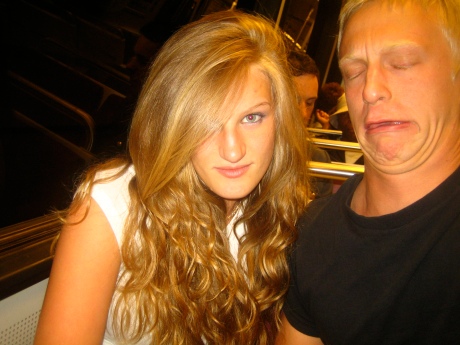
First, on to social awkwardness. I always considered myself to be a rather socially apt person in my American life, but I had suspicions that spending a majority of my time with the same 7 Americans for an entire year in a rowdy Gobi border town might have an effect on that confidence. It did. On one of my first few days back in America, I took my vastly overweight wolf-shepherd mix, Molly, for an evening walk in my city and tried to get a feel for the place again. She was kind of a buffer–my conversation starter and my security. We happened on a waning arts festival on the canal, and people started coming up to me and asking me questions about her. “What a beautiful dog!” they would say. “What kind of dog is she?”
The first person who asked me this–the first American stranger I’d spoken with in a long time, I suppose–got a very loud and awkward, “UMMM THANKS HI” in response. Another family in a paddle boat far enough away to be allowed their own private discussion began discussing my dog. “I wonder what kind of dog she is–maybe a shepherd mix?” one of them said. I edged awkwardly toward the canal alongside their boat and tried to confirm their speculation, but their conversation had moved on. As had their paddle boat. Still, in a moment of poorly timed conversational bravery, I yelled out, “SHE…is.” Only the elderly man disassembling his crafts tent heard me.
Yet another powerwalking duo approached me and complimented Molly’s beautiful coat. I told them that she had gotten a little heavy in my unspecified absence, and one of the women said, “Awwwwwwwwww, did you just finish your first year of college?”
“NO?!” was the only retort I could muster.
I guess my point is that I had lost the little graces that made me tolerable in public.
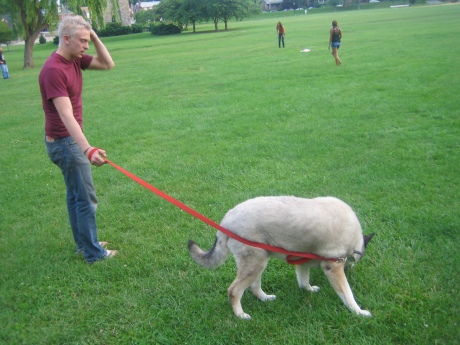
shaven and obese, but my little baby half wolf nonetheless ❤
me, being SUPER awkward on the DC Metro:
On my first night at home, we went to pizza hut as a family. It was so amazing to sit across from my mother and sister and father and actually put faces to the year-long infrequency of their voices. I ordered a huge pizza and slid back into my booth seat, reached into my bag, and extracted a few bread rolls saved from the flight. “Anyone want bread?” I asked. Everyone looked at me like I was crazy–bringing food into a restaurant like that. Faux pas 1. The pizza was amazing, though.
Maybe this would be a good segue into the aforementioned culinary heaven to which I was reintroduced upon going home. A list, and some pictures, will suffice:
pizza, sushi, ice cream, kebabs, crabs, cheeseburgers, fish, sandwiches, cheezits, pretzels, spinach salads, cheese, kalamata olives.
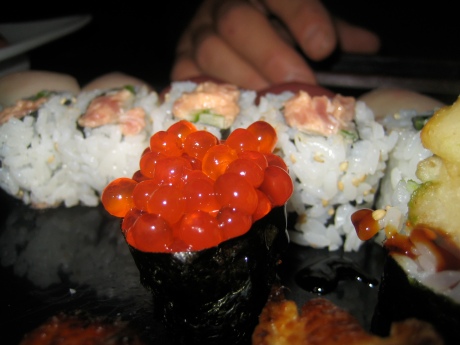
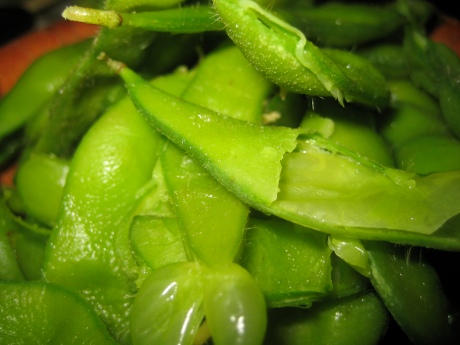
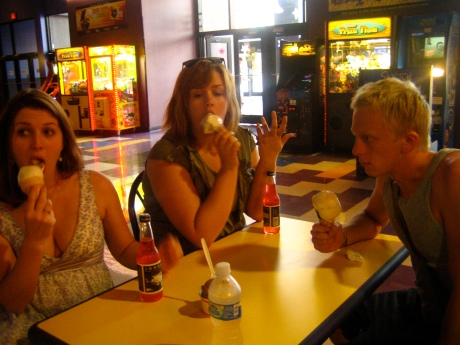
see the intensity?
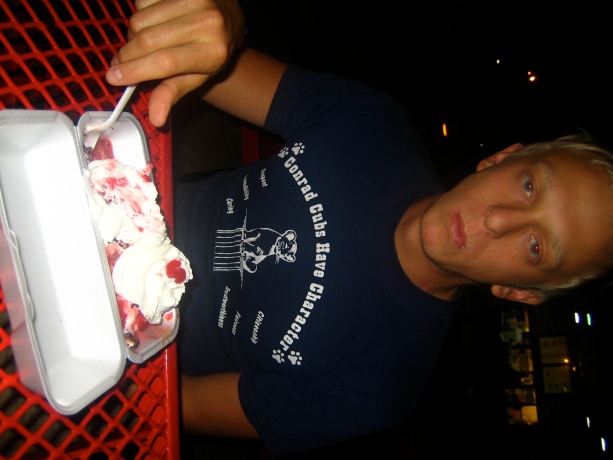
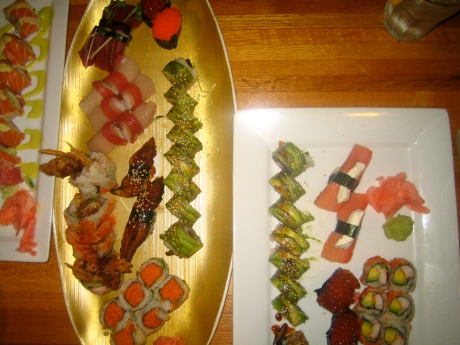
![IMG_5998 Treasure [of] the Chesapeake](https://patrickinmongolia.files.wordpress.com/2009/09/img_5998.jpg?w=460&h=345)
treasure the Chesapeake

Venison kebabs, courtesy of uncle Dan
So, in the interest of not dwelling on the unfathomable distance between my current living situation and the contents of the images above, I’ll move on to some of the other things I did while I was home. For the firs two weeks of my stay in Maryland, the weather was exactly like this:
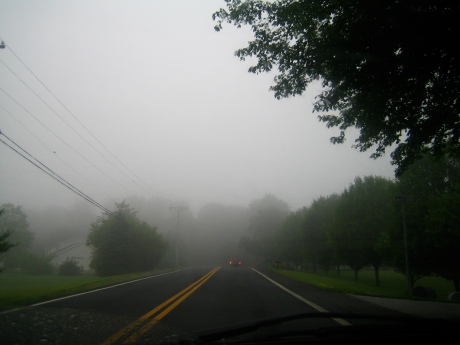 Many of you might see that and think, “how awful to finally come home and to have such heinous weather.” On the contrary–I had been living in a Gobi border town with absolutely not a single instance of rain in over 10 months, so the first two weeks in Maryland were a rainy treat to my senses.
Many of you might see that and think, “how awful to finally come home and to have such heinous weather.” On the contrary–I had been living in a Gobi border town with absolutely not a single instance of rain in over 10 months, so the first two weeks in Maryland were a rainy treat to my senses.
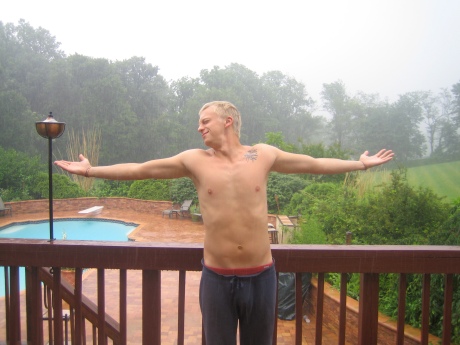
Don’t let the goofy photos fool you, though…This rainy period happened to coincide with a very dark time for my family. I won’t go into details, because this is one of those instances where I think language would fail to express some of the things we were thinking and feeling, but I will say that a member of my immediate family was diagnosed with a very serious and probably terminal illness just a few days after I got back. We panicked and suffered for two weeks before finding out, post-op, that it was a false diagnosis. All I can say is that I have never been more grateful in my life.
And fittingly, the day we got the good news, the weather transformed into (and stayed like) this:
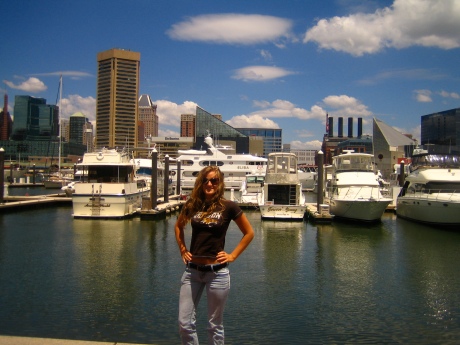
The next two weeks were smooth sailing–lots of hanging out with my family and going to the beach and spending afternoons in the mountains and playing with my dogs.
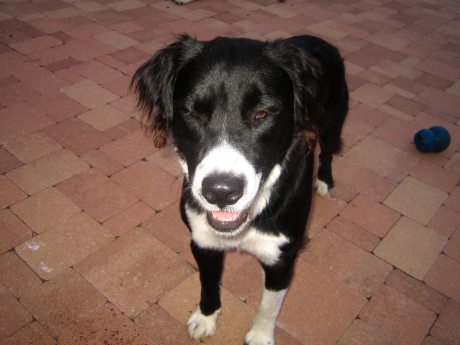
baby Gaia

my son, Blaze
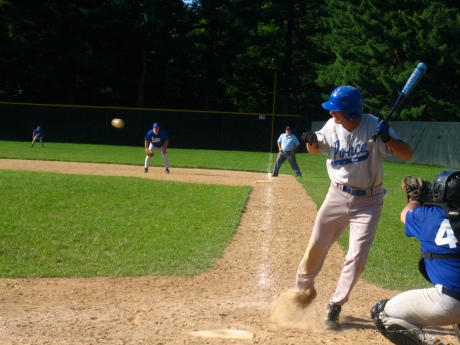
my dad, about to get hit in the hip with a fastball.
My Mema came down for four days and we hung out at the beach in Delaware. It was amazing to see her, and it was really special that she came down to see me during my visit. And Seeing the ocean was a total shock to my world after a year of cold desert life!
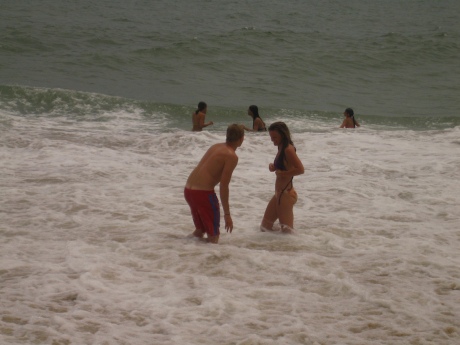
haha...
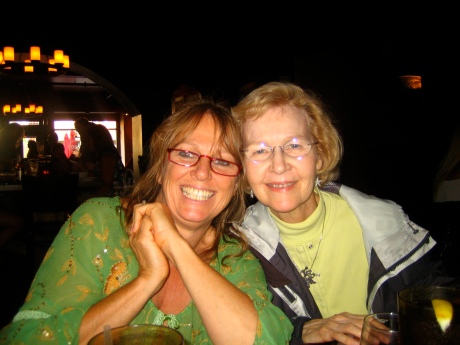
Mommy and Mema at my favorite pizza joint
Seeing everyone was amazing…I didn’t realize how much I needed a break from Mongolia and from Peace Corps until I was relaxing and living it up in beautiful Maryland. The whole experience rejuvenated me; I doubt I would have been able to stay sane during my second year here in Mongolia if I hadn’t gotten a chance to spend time with my sister. This is the longest we’ve ever been apart, and I’ve never been a huge fan of spending time away from her to begin with. Needless to say, coming back to Inner Asia was a little emotional.
Almost as soon as I returned to Ulaanbaatar, though, I began working from 7:30am-8:00 pm, five days a week and sometimes seven, in the city. I lived solo in a nice little apartment in the center of UB and trained new TEFL (Teaching English as a Foreign Language) volunteers in small satellite towns in and around Tov Aimag. Though rewarding, it was a gruelling and mentally trying experience to tackle after such a nice period of rest and rejuvenation in America. The city is expensive and trainers were not given per diem allowance this time around. I rarely slept, and on the weekends I felt I had to make the difficult decision between rest and unwinding.
In the middle of July, I skipped home to Arvaikheer for a day and a night to watch Naadam (the National holiday of the three manly sports–archery, horse racing, and wrestling). I unlocked the newly graffiti-covered door to my first floor university apartment to find that it had turned into a sandy, water-damaged hole of destruction and asbestos. The stench of the place was horrendous, and I knew then that I could not live there any more. When I returned to UB to work, I broached the subject of finally moving in with a family into my own ger or house in another part of town. Not only would the housing situation be settled, then, but I would also get a unique chance to live in a Mongolian family’s hashaa (yard) and to reach new levels of community integration through family connections. The PC Mongolia Safety and Security coordinator kindly jumped on board and persued a new housing agreement with my Mongolian supervisor at the university in Arvaikheer. To say that he was displeased, and unwilling to help, would be a vast understatement. Long story short, I am now a high school- and middle school English teacher at the Merged Advanced School for Mathematics and Foreign Language. I have moved into a ger on the slopes of the mountain above Arvaikheer (many of the photos from previous entries were taken from a spot very close to my new place) and I have NEVER BEEN HAPPIER here in Mongolia. Not to jinx anything, but my new job is filled with young and talented professionals who appreciate and seek out my input and engage me in social events outside of the workplace. My projects are almost unconditionally supported from the upper administration, the students are brilliant, and I get to work with young kids, too!
For those of you who don’t know, a ger is a circular, wood-framed felt and canvas tent. Mine is a “four-wall ger,” meaning that it has four curved sections of cross-piece latticework that come together to form the circle. The top is a dome-like shape, the apex of which rests roughly 8 feet above the center of the floor.
All ger doors face south, and as I once lived on the south side of town and am now on the highest ground in Arvaikheer, I walk out of my door every morning and literally look down on my old job. =)
Among the greatest parts of this transition is my new ability to control the temperature inside my living space by building gorgeously hot coal and wood fires in my stove. I also love the ways in which ger life encourages me to be more conscious of the resources I consume; I get my water from a well down the street once a week and store it in a huge blue container next to the entrance to the ger. At any given point, roughly 500ml of this water are kept in a small gravity sink to the right of my entrance, and this is my hand-washing water. I only refill this once a day, and I’ve still managed to stay perfectly clean. I’ve also been distilling some of my “gray”(or used) water back into drinking water.
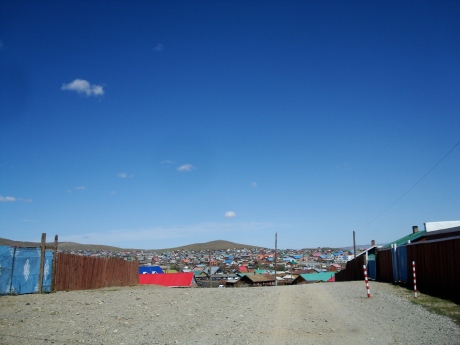
the view outside my hashaa door
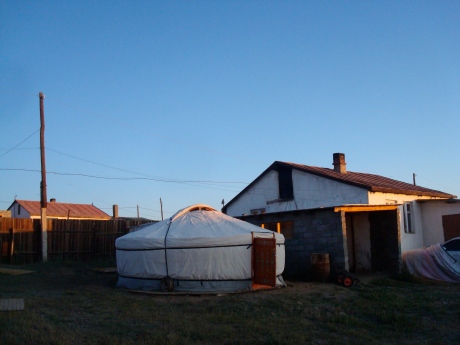
m'ger!
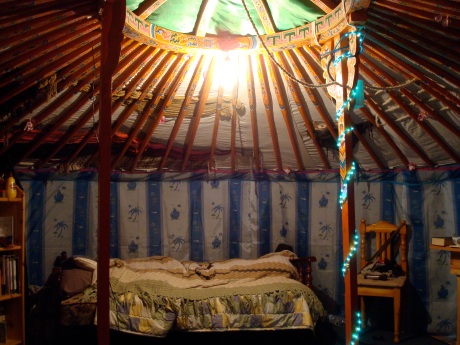
m'ger!!
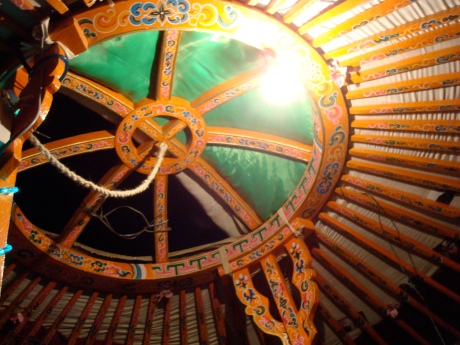
my ceiling--half is open to the sky until october, when those four sections will be covered with glass to keep out the cold
Anyway, that’s quite a bit of time squeezed into one entry. This summer has been a swoosh of family and friends and work and changes, and I’m optimistic about my second year. I’ll try to keep posting more frequently now that I have an internet cable snaking in through that new ceiling of mine =) tata.
Spring: The Craziest Time of the Year
May 2, 2009
Apologies, once again, for the insane amount of time between my last post and this one. Part of the intensity of springtime here in Mongolia, as you’ll see in this entry, is the unreliability of electricity and technology like the Internet in the face of a tempestuous climate. But things seem to have calmed down for the time being, so I’m going to try to squeeze an entry in before another biblical storm comes through.
“Spring” in American culture is synonymous with fun and sun–a respite from the perceived hardships of what is, in reality, an incredibly mild winter. In a country where the winter is 9 months long and boasts -40- degree temperatures, imminent spring is something many first-year volunteers look forward to…mistakenly. No matter how many Mongolians warned me that “Spring is terrible,” I still had it in the back of my mind that it would be the end of a pretty uncomfortable period in my service here. Spring is here now, and though it certainly does have its beauty and warm days, it can be far from pleasant.
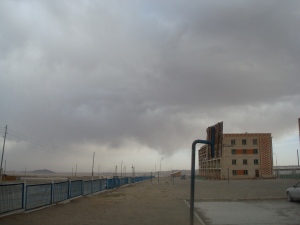
uh ohhhh
We mid-Atlantic folk are used to the back-and-forth nature of the transition from winter to spring, but living my entire life in that clime did not prepare me for what I was to experience in Mongolia. During the winter here, my senior students came over to to help me winterize my apartment. To do this, they tore up some of my less desirable bedsheets into thin strips and soaked them in a pot of hot, soapy water. Then they stuck the sudsy strips to the cracks where my windows met the sills and stuffed rolled-up newspapers in the spaces between my double panes. This, they said, would keep out the cold. It did exactly that–but it also prevented me from opening my windows whenever there was a musty feeling about the place (or whenever my kitchen inexplicably caught on fire and smoked me out.)
So, one mild day in February when the outside world seemed to be creeping out of its -40 – degree hibernation (and when I say “mild” I mean still way below freezing), I was overheating in my apartment. I decided, like the rookie I was, that if it were to stay like that, I would have to dewinterize my apartment and open some windows. The next day it rose into the 50s, and I went for a t-shirted hike down the dry riverbed behind our mountains. I was convinced that I had conquered winter. I strutted home and ripped those sheet-strips down out of the window sills and opened my kitchen and bedrooms to the desert air.
Stupid.
The next day it was -35, and there was nothing I could do to restore my apartment to the heat it had before. I convinced myself that it was worth it, and that I would be happy to be able to open my windows if temperatures rose again.
This turned out to be true. I caused several more kitchen fires, the temperatures increased periodically to where I was relieved to be able to open windows, and I was still warm in my 4-radiator apartment. And then spring came. First a few days of 70-degree beauty, and then an epic sand/ dust storm that thrashed itself through the open cracks in my windowsills and filled my house with brown Inner Asian sand and organic matter. Schools were canceled, businesses shut down, and people stayed inside unless it was absolutely necessary to go out. I kicked myself for having removed those soapy strips.
It’s been like that for about a month now–60s and 70s with intermittent dust storms. Sometimes the wind dies down, but the dust just floats in the air like a huge brown blanket and stays hot and backlit by a blazing high-altitude sun.
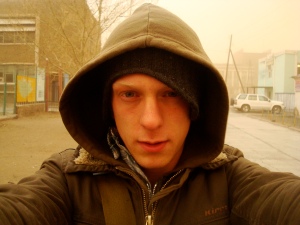
uh ohhhhhhhhhhh
Sometimes it’s warm and beautiful in the morning, and I leave my house on the southside of town and walk to the market or to friends’ houses in summer clothes. I conduct my business in town, and when it’s time for me to return home, the skies have darkened, it’s dropped 30 degrees, and it’s snowing. This makes it all the more frustrating when I go into town for scheduled commitments–like police department English classes, trainings, or meetings–and I arrive to find out they have been canceled for whatever reason. I’m left, then, to walk home in my t-shirt through the newly miserable weather when I could have just stayed home.
Last wednesday shattered the last glimmer of trust I had in my ability to guage Uvurkhangai weather patterns. It was about 60 degrees and sunny when a traveler and I headed up to town–I had my cop class, and she was going to hang out with my sitemates. In the middle of my lesson–just like a school kid distracting his classmates at first sight of flurries through the window of his 4th grade classroom–I froze and stood staring out the window of the courthouse at what I had previously thought was just a strange glass tint. In fact, it was a deep brown cloud rushing around the city and bending trees and bushes to the ground at 60 mph. After my lesson finished, I threw on a hoodie and rushed outside to my sitemate’s work, where I was owed some money. It looked like this outside:
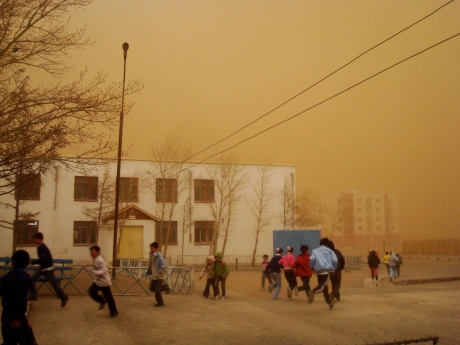
people fleeing at my friend's work
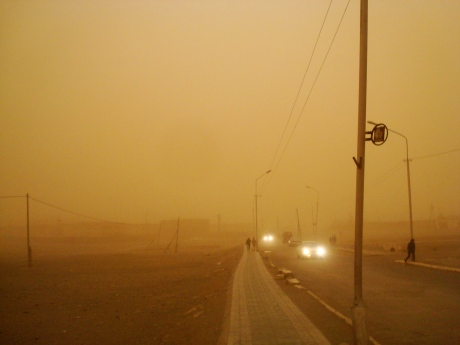
my school
Afterwards, I let the horrifying winds push me home to rest a while and wash up. Fine sand filled my mouth and ears and hair; in any other context it would not be too big of a deal for me, but people in Mongolia are susceptible to pink eye and other infections from sandstorms due to the fact that a large portion of the dust blown around in storms actually contains fecal matter.
I napped for a while after braving the storm, and when the winds died down the traveler and I decided to meet up with my sitemates at his house. While we were enjoying coffee and a movie, the sand/dust storm picked up again and it snowed almost a foot outside in some places. Then the lightning started. As I may have written in other entries, the strength of the prevailing north-to-south winds makes walking into town from my apartment a 20-minute ordeal, but walking back to my apartment from virtually anywhere else in town takes around 10 minutes for the same reason. Walking home from my sitemate’s house that night took three and a half minutes.
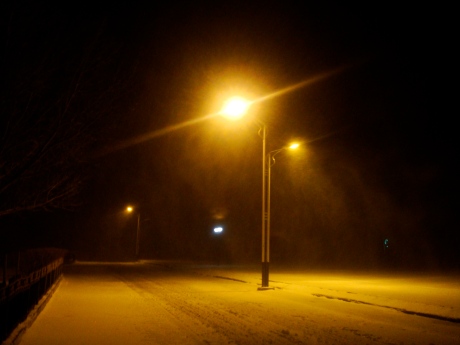
sand/dust/snow/lightning storm
The next day, the snow melted and flooded the town, like so:
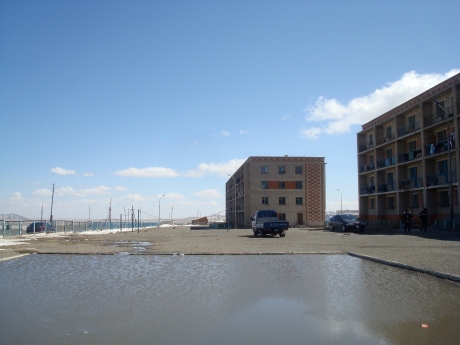
my school apartment complex
and then, after a beautiful sunset, the flooding froze and coated the town in thick ice.

sunset over the mountains
The pleasant transition into American Spring tests the work ethic of students and working adults alike. One might wonder, then, what the consequences of a Mongolian Spring would be on the population here–particularly in a desert province. In my experience, spotty attendance and an exponential loss of interest in all things scholastic result from the weather here at my university. Even teacher punctuality and attendance drops off completely in springtime in some places in Arvaikheer. This can be extremely frustrating, considering the fact that Spring comes shortly after Tsagaan Sar (the White Month–see last entry), which is marked by over a month of no work in some instances. Many of my best students have been exhibiting signs of apathy and fatigue lately, and it certainly has an effect on their performance.
At first, I couldn’t seem to figure out what it was that was making my students and colleagues behave this way. There’s no cabin fever if there’s no reason to go outside, and the winter-spring transition was one in which the weather had just changed from one kind of horrible to another. But then I started feeling an intense fatigue, too. I would wake up on the weekends at 11 am and be completely exhausted by 8 pm, after having done nothing. This has stuck with me for a few weeks now, and I can honestly say that I’m beginning to understand why Spring is so counterproductive. In America, I would sometimes get sick during seasonal transitions if the temperatures fluctuated too quickly. Though I haven’t gotten sick here yet as a result of temperature changes, I can feel the stress it puts on my system; to put it in perspective, microbiologists at pharmaceutical companies use controlled rapid temperature swings to make bacteria weak enough to open up and take on new DNA to protect themselves (and the tailored DNA usually codes for the production of chemicals used in the creation of medicines, but whatever.) My point is that temperature swings like the ones we have here are TERRIBLE for your body.
On a more concrete level, thousands upon thousands of livestock die every time we have storms like this. This has historically been a huge problem for rural Mongolia, and the issue of desertification in provinces like Uvurkhangai only compounds the personal, communal, and economic impact of losing livelihoods to storms. In the aforementioned sand/dust/snow/lightning storm, for instance, Uvurkhangai lost 60,000 sheep, goats, and cows, and several people died. A program called The Ger Initiative (in cooperation with a company based in Germantown, MD, mom and dad), used to provide capacity building trainings and resources to herders and farmers who had lost their livestock to such storms, but the organization is being phased out in Mongolia.
Switching gears a bit, I’d like to point out a non weather-related challenge of springtime in Mongolia: graduation. Like all other social milestones, graduation is something that is heavily prepared for and celebrated here in Mongolia. This usually involves buying expensive clothes or having them made from flashy fabrics, traveling, and tons of money spent on parties. It has come to my attention lately, as graduation approaches, that people in Arvaikheer go to Ulaanbaatar to buy fancy graduation clothing, and people from the deep countryside come to Arvaikheer to buy theirs. So, in and around the last week of April and first week of May, there is a huge population turnover in my town.
I wish I could say that I noticed this when I stopped recognizing as many people, or that I caught on when I saw more traditional clothing being worn, but in truth the only reason I can tell this is happening is because there are more drunk men stumbling around in the markets and streets. To qualify, this is not to say that all countryside people are drunks–on the contrary, as stated in previous entries, herders are among the most successful and upstanding members of my provincial community. The difference here is that the weather is getting nice, and when many countryside families come into town to buy clothes, other friends and family tag along for the ride. The women and young adults do the shopping while the men entertain themselves. In a country that has more vodka factories per capita than any other nation on earth, an increase in population in a given area, however temporary, is bound to bring a higher incidence of alcohol abuse with it.
One also has to take into account the fact that an influx of countryside friends and relatives is sure to stir up social activity, which is almost always marked by alcohol consumption. So, in other words, it’s gotten pretty rowdy over the last few weeks.
highlights:
- I was chased through the market the other day at full speed by a fiercely drunk man, who was trying to choke me. He pursued me through the busy isles into a large white department store, bought an orange, and stumbled out. I called the police, but no one picked up.
- two separate groups, in two separate cars, ran me off the road when I was walking the other day. One came up onto the sidewalk to hit me, and the other charged at me and forced me up against a building. I wasn’t hit by either of them, but it still scared me a bit. Both parties drove away laughing.
- I saw one young man roundhouse kick someone else in the face in the square yesterday in a screaming fit of rage, and then they walked away arm in arm.
- a visiting volunteer was nearly knocked down when a fight broke out between two drunk men in the doorway to the meat market as we were leaving, and one of the men was pushed onto her.
- several countryside male students at my technical institute who matriculated and then did not attend a single class returned to Arvaikheer to attempt to get their diplomas, saw me for the first time all year, and decided I was a tourist that they could harrass. Light, but obnoxious.
Each of my sitemates has a slew of similar stories from the last few weeks, but fortunately we have all been here long enough to be secure in our longterm safety and membership in the community. As I said, with temporary population turnover comes new interpersonal challenges, and I think we are all more than capable of putting up with these setbacks until graduation comes. The real challenge is dealing with the remainder of a wildly tempermental phase in Mother Nature’s schedule.
